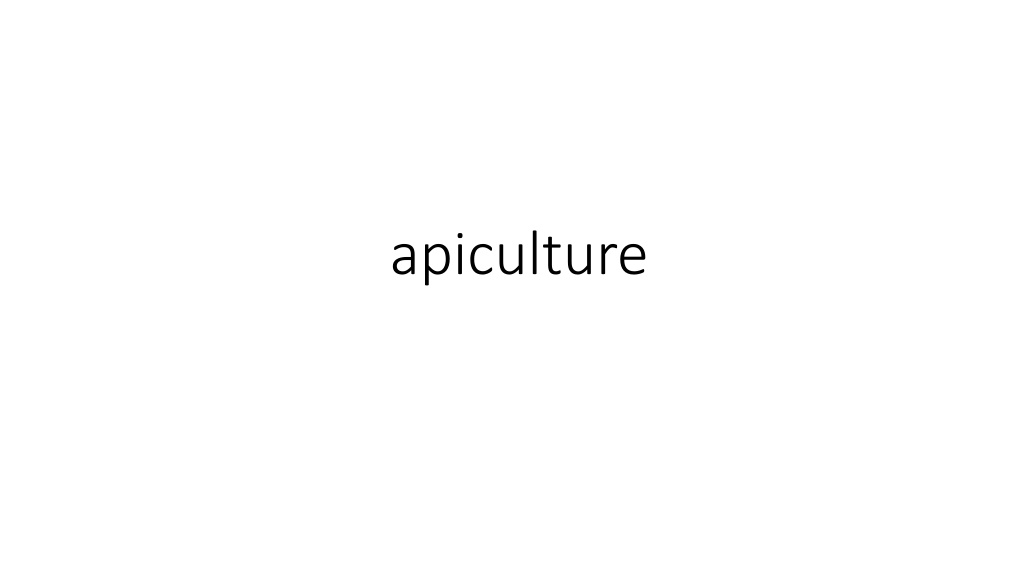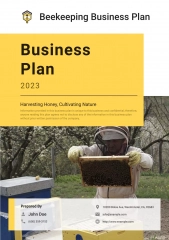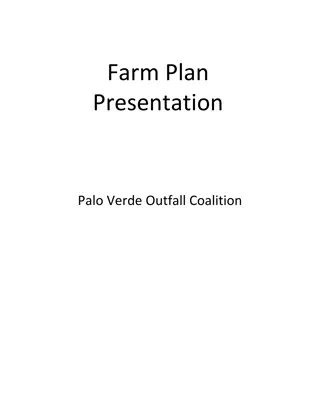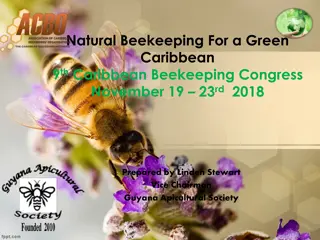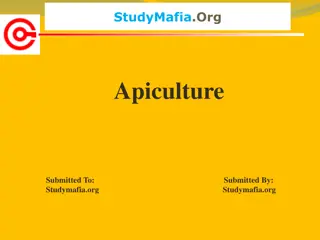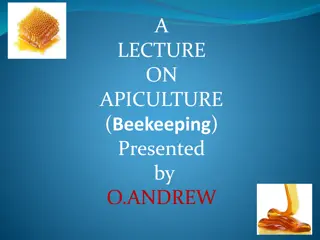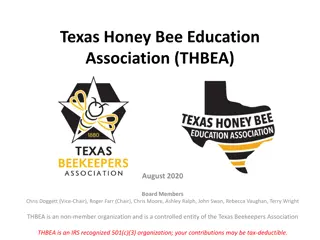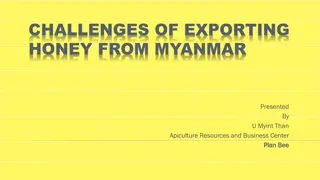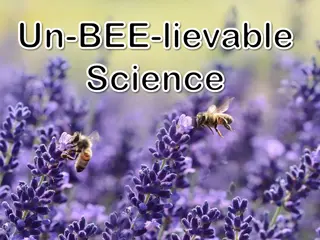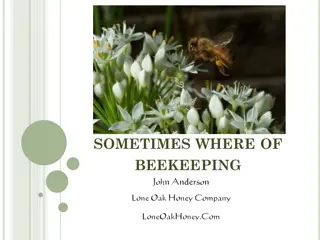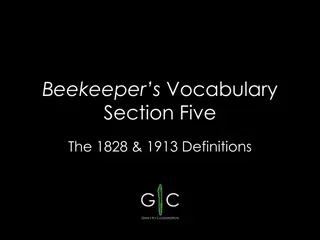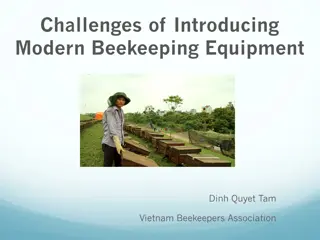Understanding Apiculture and Beekeeping Practices
Apiculture, the practice of beekeeping, involves various processes such as swarming, hive construction, bee selection, and beekeeping methods. Swarming occurs when the queen and some bees leave the colony to form a new one. The hive or comb structure consists of hexagonal cells for brood development. The selection of bees for apiculture is crucial, focusing on traits like gentleness and colony strength. Different beekeeping methods, including indigenous, movable, and modern approaches, offer diverse ways to manage bees. Specific tools like movable hives, queen excluders, and honey extractors aid in honey production. Dive into the world of apiculture to learn more about these fascinating practices.
Download Presentation

Please find below an Image/Link to download the presentation.
The content on the website is provided AS IS for your information and personal use only. It may not be sold, licensed, or shared on other websites without obtaining consent from the author. Download presentation by click this link. If you encounter any issues during the download, it is possible that the publisher has removed the file from their server.
E N D
Presentation Transcript
Swarming Swarming The process of leaving off the colony by the queen is called swarming It happens towards the end of the spring During spring season some sometime the comb is over crowded by the natives so the queen along with some workers and drones leave the colony and get settled somewhere else Swarming take place by the virgin queen also Supersedure Absconding
Hive or comb Hive or comb Various types of bees make various types of comb but their lay out pattern is same They have common partition wall these cells are hexagonal They are divided into chambers the brood chambers having egg larvae and pupae of the brood The cells of drone is large as compare to worker cell
Selection of bees for apiculture Selection of bees for apiculture Bees should be gentle temperament Bees should have capability to construct strong colony It should have capability to protect against enemies Bees can form their comb easily Workers can suck juice
Methods of bee keeping Methods of bee keeping Indigenous method Wall or fixed hive It is purely natural type of comb Bees themselves prepare the comb Movable hive It comprises of hollow wood logs empty boxes and earthen pots Modern method It comprises of wooden box comprises of definite size kept on wooden frame and contain outlet Sometime bee hive s provided by two holes one entrance and one exit Brood chamber is the largest and contain network of wooden and wire mesh
Bee hive and other tools connected with bee Bee hive and other tools connected with bee keeping keeping 1. Typical movable hive Artificial movable hive is constructed by wooden box based on bee space theory Stand Bottom board Brood chamber Super 2 Queen excluder To obtain pure honey free from foreign matter It is necessary to separate the brood chamber from the surplus honey stores 3 Honey extractor It is used for the extraction of the honey from the comb function on principle of centrifugation
4 uncapping knife 4 uncapping knife When the cells of honey comb have been filled they are sealed by the bees by capping the wax Bes capping are to be removed with the help of uncapping knife Equipment for handling bees Smoker Hive tool Over all Bee veil Gloves Brush Swarm catching equipment Feeder Queen cage Queen cell protector Dummy or division broad Bee escape
Precautions Precautions The hive should not be kept more than half a mile away from the place from where the bees have to collect the nectar and pollen People must know about the bee keeper for proper contact The boxes must be kept under the shades Industry should be near the road Hive should face east Water should be available nearby
Products of bee keeping Products of bee keeping Honey Honey Honey is viscous sugary fluid Used as food from new born to adult.2.1 gm of honey -67 kcal Preparation of chocolates, biscuits, cakes. As medicine Acts against cold ,cough, fever and blood purifier. Act as Curative agent, sore of eyes, throat and ulcer of tongue, antiseptic Used in diabetic patients and allergic Malnutrition after heart attacks and indigestion Detoxifies body, helps to lose weight, enable to sleep Skin health
Composition of honey fructose 38.2 % Glucose 31 % Water 17.1 % Maltose 7.2 Sucrose 1.5 Other carbohydrates 4.2 mineral/vitamins 0.5 enzymes
BEES WAX Worker bee produce bee wax After 2 weeks life Insoluble in water, soluble in ether Wax synthesized from reducing sugars in alimentary canal White in color Uses: Models,candles,paints,varnish,cosmetics,creams,lotions,ointments,leather and pharmaceutical industry. adhesives Used for block formation in microtomy
Royal jelly Secretion of worker bee gland Food for queen fed to workers for 3 days Chemical composition Water 67% Proteins 12.5% Sugar 11.05 Fatty acids 5 Minerals 0.82 Vitamins(b c d) 4 PH 3.6
Uses Most important as Dietary supplement. cosmetics, creams
propolis Bee glue, resinous collected from buds color depend on plants,usually dark brown. Used to fill gaps and crevices in hives, protection of hive from parasites. Uses: Inflammation, viral diseases ulcers reduce ,cataract, healing.
Bee venom 7 abdominal segment has sting Catch skin and victim bee dies. Burning taste acidic HCL, formic acid, histamine Uses Hemolysis of blood As Antibiotic In rheumatoid arthritis For lowering blood pressure Neural disorders
Bee pollen Uses : Pollen stored in baskets cure of infertility Reduces toxicity
